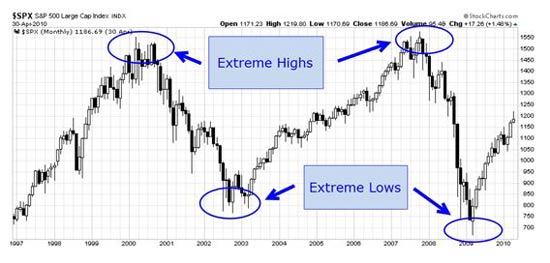There are just over 3,800 stocks trading on U.S. markets on any given trading day, from the coveted Berkshire Hathaway “A” shares trading at $283,000 each, to the dozens of (really) small no-name companies you can buy for less than $0.01.
And yet, only a fraction of these 3,800 stocks are “in play.” Fewer still are in any kind of position to make you money.
So today, I’m going to show you exactly how to spot the small handful of stocks that can – and often do – make you rapid, outsized profits.
These are shares undergoing rare “extreme” situations that are really easy to spot if you know what you’re looking for (and even easier to make double- and triple-digit gains on).
You don’t have to pick from a list of stocks, either; just one can make you incredible gains, in anywhere from a few hours to a few trading days.
For instance, earlier in 2018, during volatile January, my 10-Minute Millionaire Pro subscribers had a chance to close out two 100% gainers and another 108% winner. The longest we were in any of those positions was just eight trading days!
That’s right: Some weeks, I make all the money I need for a month or a year before lunch. Everything else is just cream.
Put in a little work – just 10 minutes a day – to get enough of these going for you, and before you know it, making money happens with a precision and regularity that’s almost machine-like!
As I’ll show you in a second, these extremes I’m talking about happen courtesy of the millions of people buying and selling stocks every day. They’re rare, but there’s almost always at least one of these incredibly lucrative opportunities somewhere every single day the markets are open.
Here’s how you can bag them…
The Markets – They’re Just Folks
It sounds almost too simple, but it’s true: Markets are made up of people – millions of them.
That means, like us, the markets are also a whirlwind of emotions… of fear… of greed… of predispositions and prejudices… of likes and dislikes.
Markets, you see, are like big, global auction houses. But instead of antiques, old books, or china, the objects being sold include stocks, bonds, bars of gold, shipments of pork bellies, or contracts to buy oil at some date in the future.
The fact that the “bidders” are situated all around the world – and aren’t congregated in one room – doesn’t matter. They’re all connected by a computer, so there’s a “virtual” auction house.
And we’re still talking about a group of bidders who are susceptible to biases and who are ruled by their innate likes and by emotions like greed and fear.
Thanks to those emotions, financial markets (and the individual securities in them) get “out of whack” from all the time. Emotions cause entire markets to overrun at “tops” and overrun at “bottoms.”
At market tops, when prices are very high, investors are “irrationally exuberant” – and they willingly overpay. At market bottoms, when prices are very low, investors become indifferent or downright depressed, and you can’t give the stuff away.
As investors, the real benefit to these extremes is that you can exploit them for hefty profits… often at risk levels that are well below normal.
Here’s how to find it – and how to cash in on it…
Two Possible Directions, One Likely Outcome: Big Profits
Reversals are the type of extreme that most people are familiar with, despite being the rarest type of extreme you’ll see.
This is the type of market condition that only happens once in a great while – but the resulting move is huge.
Reversals come in two flavors – oversold and overbought.
You can see both on this chart. Now, just so you know, this chart isn’t part of any active recommendation – it’s very old, in fact, but I include it here because it perfectly illustrates the kind of extreme I’m talking about.

Let’s start with extreme oversold reversals.
These happen when the stock or even the entire market has plunged, pushing the price level down well beyond what is reasonable.
That means, simply, that the shares or market in question are poised for a spring back to the upside.
With these kinds of extreme reversals, we’re looking at something that’s plummeted to an extreme, so much so that the price is poised for a “snapback” to the upside.
Again, thanks to the general bias to the upside – a tendency that reflects the innate optimism of the people doing the trading – stocks, sectors, and indexes tend to bounce back sharply after a major drop.
In fact, 18 of the 20 largest single-day up moves in the S&P 500 were the result of extremely oversold snapbacks during massive bear moves.
Again, these major extreme reversals happen only occasionally, and it’s great to be in those trades when it happens because the payoffs are huge. But there are other types of extremes that happen more frequently and can be very profitable to find as well.
Now let’s look at extreme overbought reversals.
The extremes of this flavor that are the easiest to identify and occur when the price of the stock or financial asset has gone straight up (up too far and too fast) – meaning it’s poised for a pullback or snapback to the downside.
Before I sign off, extremely overbought reversals have one characteristic that must be understood: Because investors have an optimistic bias (meaning prices have the same predisposition), individual stocks, sectors, and even entire markets can stay overbought for some time.
Like John Maynard Keynes was supposed to have said: “The market can remain irrational longer than you can remain solvent.”
Of course, now that you know how to spot the extremes I just showed you, you can stay safely on the right side of that sentiment.
— D.R. Barton, Jr.
Source: Money Morning

